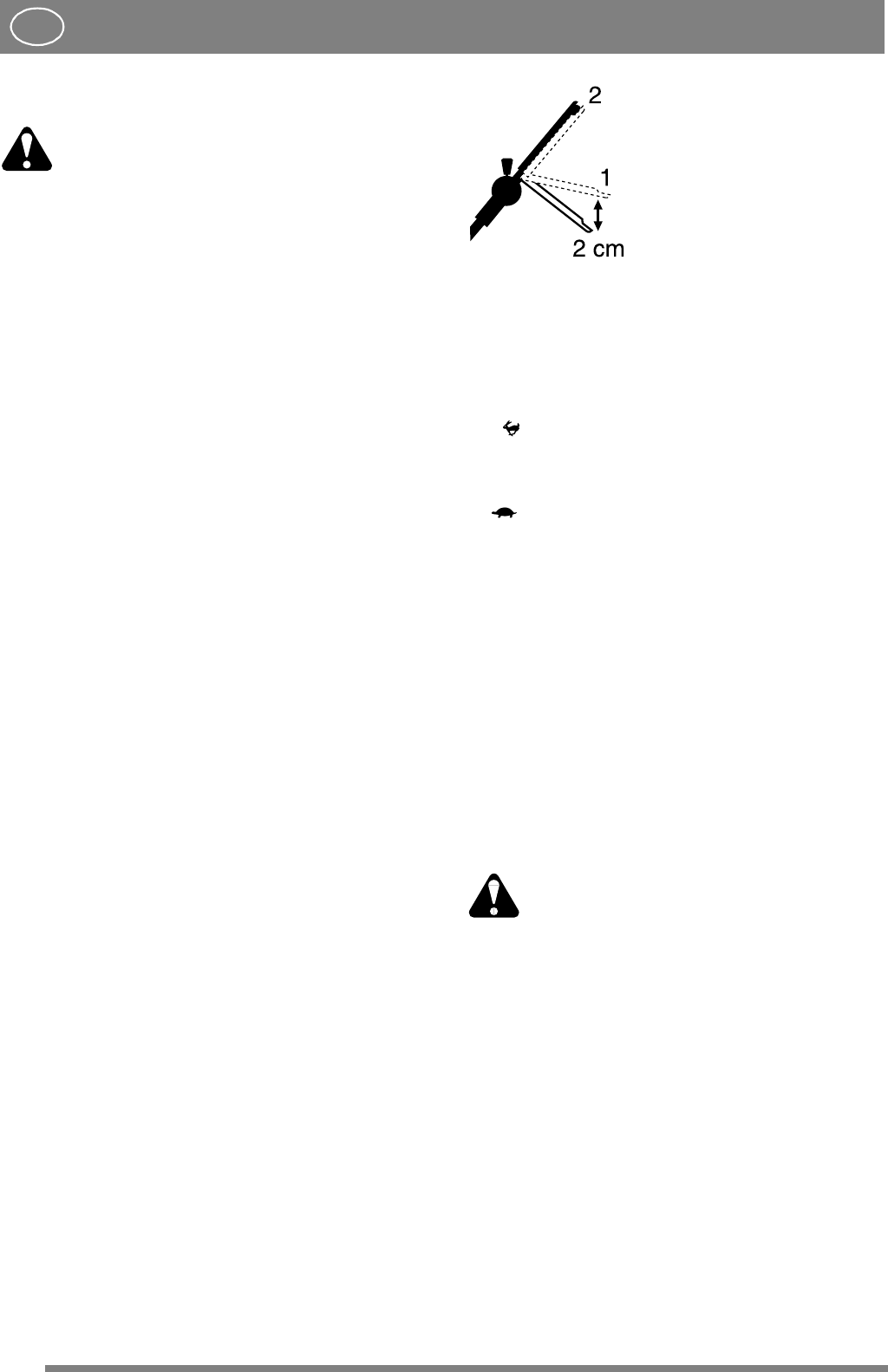
11
ENGLISH
GB
BATTERY (*)
The electrolyte in the battery is toxic
and corrosive. It can cause serious cor-
rosion damage etc. Avoid all contact
with skin, eyes and clothing.
In normal use during the season, the battery is
charged by the engine. If the engine cannot be
started with the ignition key, it may be because the
battery is 'dead'.
Dismantle the battery by opening the battery cov-
er, disconnecting the terminal on the engine and re-
moving the battery (fig. 24). Connect the battery
charger (provided) to the battery, then connect the
charger to a wall socket and charge for 24 hours
(fig. 25).
After charging, the battery may be reinstalled and
the terminal on the battery connected to the termi-
nal on the motor (fig. 26).
The battery charger may not be connected directly
to the engine terminal. It is not possible to start the
engine with the charger as the power source and
the charger could be damaged.
WINTER STORAGE
Remove the battery and store it fully charged (see
above) in a dry, cool place (between 0°C and
+15°C). At least once during the winter storage pe-
riod, the battery should be maintenance-charged.
Before the start of the season, the battery should be
charged once again for 24 hours.
ADJUSTING CLUTCH CABLE (*)
If the drive does not engage when the clutch loop
is pressed against the handle, or if the lawnmower
feels cumbersome or slow, this may be because the
clutch in the transmission is slipping. To rectify
this situation, adjust the clutch cable as follows:
1. When the clutch loop is released, it should be
possible to push the mower without any resist-
ance. If this is not the case, screw in the nipple
T until the mower can be pushed (fig. 28).
2. When the clutch loop is
pressedinapprox.2cm(posi-
tion 1), there should be some
resistance when pushing the
lawnmower. With the clutch
loop fully pressed in (position
2) it should not be possible to
push the mower. Unscrew the
nipple T until this position is
achieved.
ADJUSTING VARIATOR CABLE (*)
If the speed difference between the settings in the
variator control giving the fastest speed (position 3
and ) appears insignificant or nothing at all, the
variator cable might need tightening (fig. 16).
1. Run the mower for a few minutes in position
.
2. If the variator cable shows some play in nipple
Y it needs tightening. Undo the locking nut X
and tighten the cable by unscrewing the nipple
Y until the cable ceases to show any play.
3. Tighten the locking nut X.
NOTE! Do not stretch the cable beyond the point
where there is no play in the nipple Y. If the cable is
over-tightened, the drive belt could break and/or
other parts of the transmission be damaged. When
setting after e.g. belt change, always start with the
nipple Y completely screwed in.
CHANGING BLADES
Wear protective gloves when changing
blades to avoid cutting yourself.
Check the blade system regularly. Check
particularly the curved area behind the
blade edge for traces of wear. If the blade
shows traces of damage it should be re-
placed. A worn blade creates imbalance
and can damage the mower.
Always check the blade(s) after a collision. First
disconnect the spark plug cable. If the blade sys-
tem has been damaged, defective parts should be
replaced. Always use genuine spare parts.
To replace the blade, undo the screw (fig. 29, 30).
Fit the new blade so that the stamped logo is turned
up facing the blade holder (not facing the grass).
Reinstall as illustrated. Tighten the screw properly.
Tightening torque 40 Nm.















